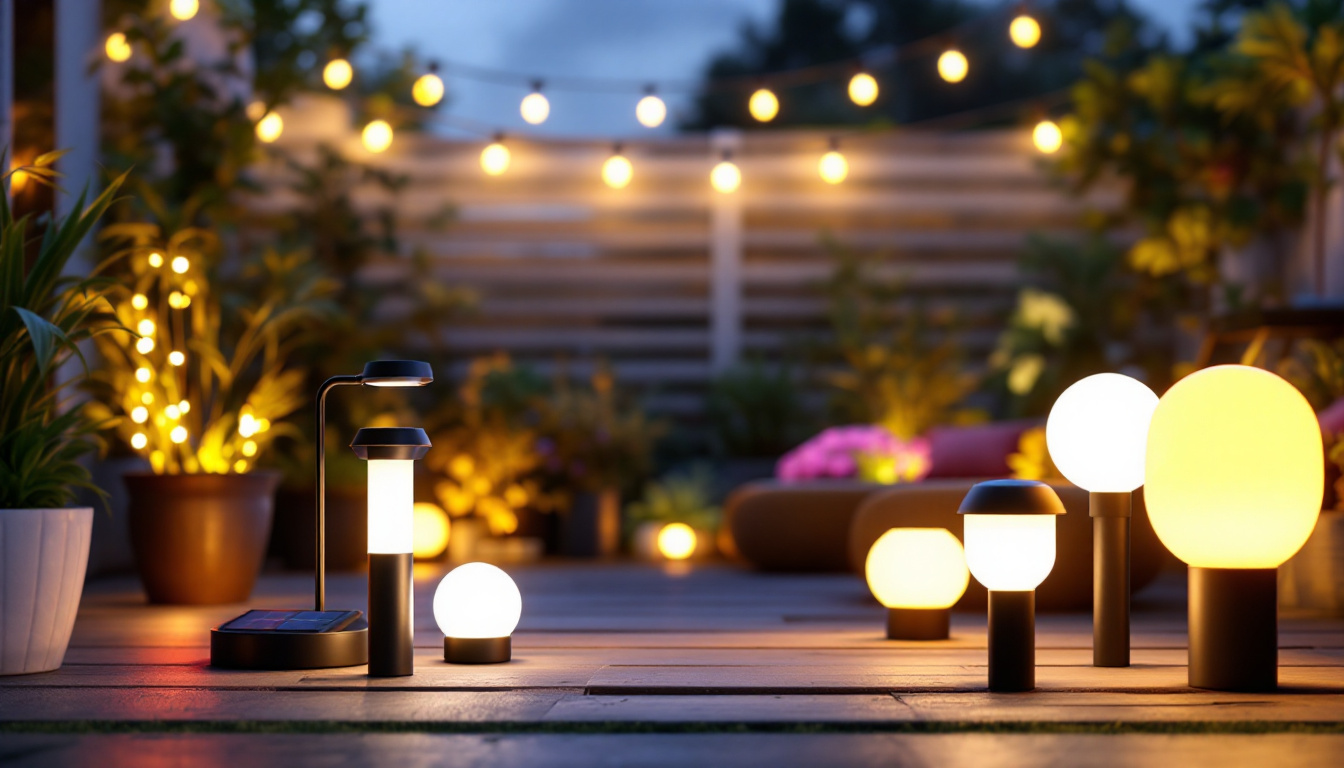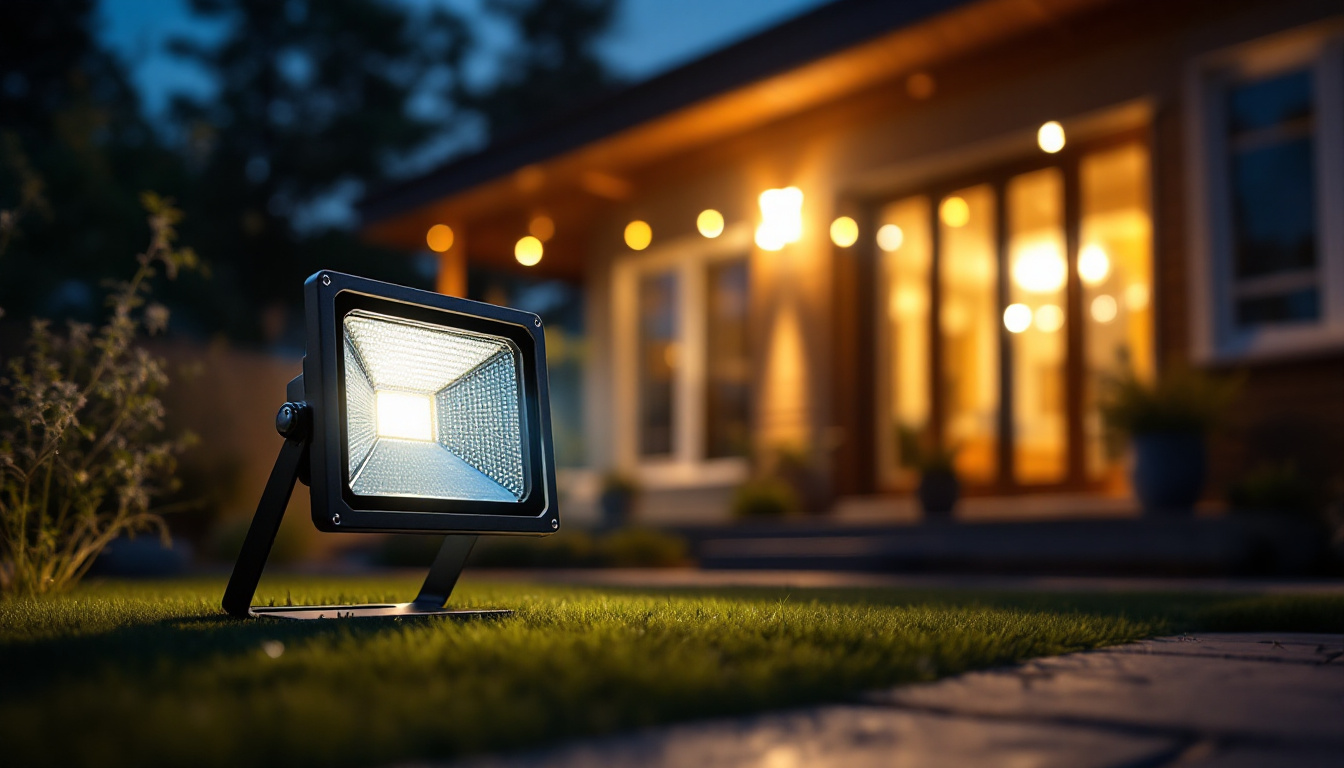
In the ever-evolving world of lighting design, the demand for innovative solutions that do not require traditional power sources is on the rise. As a lighting contractor, understanding the nuances of these options can not only enhance your service offerings but also help you navigate potential issues that may arise during installation and maintenance. This article explores various types of lighting that are not dependent on being plugged in, the benefits they offer, and how contractors can effectively implement them in their projects.
Wireless lighting solutions have gained popularity due to their flexibility and ease of installation. These lights often utilize battery power or solar energy, making them ideal for various applications, from outdoor settings to temporary installations. In addition to their practical benefits, wireless lighting options also allow for creative design possibilities, enabling users to experiment with different lighting styles and arrangements without the constraints of wiring.
Battery-powered lights are versatile and can be used in locations where traditional wiring is impractical. They are especially useful for events, exhibitions, and temporary setups. However, contractors must consider several factors when working with these lights.
First, the lifespan of the batteries is crucial. It is essential to choose high-quality batteries that offer a longer runtime to minimize the need for frequent replacements. Additionally, educating clients on battery maintenance can lead to a better overall experience. Furthermore, many modern battery-powered lights come equipped with energy-efficient LED bulbs, which not only extend battery life but also provide bright, vibrant illumination that enhances the aesthetic appeal of any space.
solar-powered lights harness energy from the sun, making them an eco-friendly option. These lights are particularly effective for outdoor installations, such as garden paths, patios, and public spaces. However, contractors must ensure proper placement to maximize sunlight exposure.
When installing solar lights, it is vital to consider the geographical location and seasonal variations. Understanding the local climate can help in selecting the right type of solar lighting that will perform optimally throughout the year. Additionally, many solar lights now feature advanced technology, such as motion sensors and adjustable brightness settings, allowing for greater control over energy consumption and enhancing security in outdoor areas. This innovation not only contributes to energy savings but also adds a layer of convenience, as users can customize their lighting experience based on specific needs and preferences.
Off-grid lighting solutions offer numerous advantages, making them appealing to both contractors and clients. These systems are designed to operate independently of the electrical grid, providing a reliable source of illumination in various situations. Whether for remote cabins, outdoor events, or emergency preparedness, off-grid lighting can be a game-changer.
One of the primary benefits of off-grid lighting is cost-effectiveness. By eliminating the need for extensive wiring and electrical infrastructure, contractors can reduce installation costs. Additionally, clients can save on their electricity bills, making these solutions attractive in the long run.
Moreover, the reduced need for maintenance and repairs associated with traditional lighting systems can further enhance cost savings. This aspect is particularly appealing to clients looking for sustainable and budget-friendly options. Many off-grid lighting systems are designed with durability in mind, often featuring weather-resistant materials that can withstand harsh conditions. This means fewer replacements and repairs over time, allowing clients to allocate their resources more efficiently.
As sustainability becomes increasingly important, off-grid lighting solutions align with environmentally friendly practices. Utilizing solar power or energy-efficient LED technology significantly reduces carbon footprints, appealing to eco-conscious clients.
By promoting these benefits, contractors can position themselves as industry leaders committed to sustainable practices, attracting a broader clientele interested in green solutions. Furthermore, the integration of off-grid lighting in community projects can foster a sense of environmental stewardship among residents. Communities that adopt such technologies often see a ripple effect, inspiring local initiatives focused on sustainability and conservation, which can lead to a more engaged and environmentally aware populace.
While the advantages of non-plugged lighting solutions are clear, contractors must also be aware of the challenges associated with their implementation. Understanding these challenges can help mitigate potential issues and ensure successful project outcomes.
Installing battery-powered or solar-powered lights requires careful planning and execution. Contractors must assess the site conditions, including terrain, sunlight availability, and existing infrastructure, to determine the best approach for installation.
In addition, contractors should be prepared for the possibility of needing additional accessories, such as mounting hardware or protective casings, to ensure the longevity and effectiveness of the lighting solutions.
Educating clients about the differences between traditional and non-plugged lighting solutions is essential. Many clients may be unfamiliar with the benefits and limitations of these systems, leading to unrealistic expectations.
Providing clear information about maintenance requirements, battery replacement, and potential performance variations can help clients make informed decisions and foster trust in the contractor’s expertise.
As technology advances, new innovations continue to emerge in the lighting industry. Staying informed about these developments can give contractors a competitive edge and enhance the services they provide.
smart lighting systems integrate wireless technology, allowing users to control their lighting remotely via smartphones or other devices. These systems can be battery-operated or solar-powered, providing flexibility and convenience.
Contractors should familiarize themselves with various smart lighting options available in the market, including those that offer features such as motion sensors, dimming capabilities, and programmable schedules. This knowledge can help contractors recommend the best solutions to meet their clients’ needs.
LED lights have revolutionized the lighting industry, offering energy efficiency and longevity. When combined with battery or solar power, LED technology becomes an even more appealing option for non-plugged lighting solutions.
Contractors should emphasize the benefits of LED lights, such as their low heat output, reduced energy consumption, and extended lifespan. By promoting these advantages, contractors can help clients understand the value of investing in quality lighting solutions.
To ensure the successful implementation of non-plugged lighting solutions, contractors should adhere to best practices during installation and maintenance. These practices can help avoid common pitfalls and enhance the overall performance of the lighting systems.
Before installation, conducting a thorough site assessment is crucial. This process involves evaluating the location’s lighting needs, potential obstacles, and the best placement for lights to maximize effectiveness.
Contractors should consider factors such as ambient light levels, the purpose of the lighting (e.g., security, aesthetics), and the surrounding environment. A comprehensive assessment can lead to better design choices and improved client satisfaction.
Even non-plugged lighting solutions require maintenance to ensure optimal performance. Contractors should establish a maintenance schedule that includes regular checks on battery levels, cleaning solar panels, and inspecting fixtures for damage.
Encouraging clients to participate in maintenance can also foster a sense of ownership and responsibility for their lighting systems. Providing clear guidelines on how to care for the lights can enhance their longevity and effectiveness.
Real-world examples can provide valuable insights into the successful implementation of non-plugged lighting solutions. These case studies can serve as inspiration for contractors looking to expand their offerings.
A lighting contractor was tasked with illuminating a large outdoor event space for a festival. By utilizing battery-powered LED lights, they were able to create a vibrant atmosphere without the need for extensive wiring. The flexibility of these lights allowed for easy repositioning as the event layout changed, ensuring optimal lighting throughout the venue.
Feedback from attendees highlighted the effectiveness of the lighting in enhancing the overall experience, showcasing the potential of non-plugged solutions in temporary installations.
In a residential project, a contractor installed solar-powered garden lights to enhance the outdoor living space of a client. The lights not only provided illumination but also added aesthetic value to the landscape. By carefully selecting fixtures that complemented the home’s design, the contractor was able to create a cohesive look.
Regular maintenance checks ensured that the lights continued to perform well, and the client expressed satisfaction with the low energy costs associated with their solar lighting system.
The future of lighting is undoubtedly leaning towards more sustainable and flexible solutions. As technology continues to advance, contractors must remain adaptable and open to incorporating new innovations into their projects.
As the demand for non-plugged lighting solutions grows, emerging trends such as solar-integrated streetlights and smart outdoor lighting systems are gaining traction. Contractors should stay informed about these trends to offer cutting-edge solutions to their clients.
Participating in industry conferences, workshops, and training sessions can provide valuable insights into the latest developments, ensuring that contractors remain at the forefront of the lighting industry.
Ultimately, the success of non-plugged lighting solutions depends on understanding and meeting client needs. By adopting a client-centric approach, contractors can build lasting relationships and foster loyalty among their clientele.
Listening to client feedback, offering personalized recommendations, and providing exceptional service can set contractors apart in a competitive market. This focus on client satisfaction will not only enhance project outcomes but also contribute to long-term business success.
Non-plugged lighting solutions present exciting opportunities for lighting contractors to expand their service offerings and meet the evolving needs of clients. By understanding the various types of wireless lighting, recognizing the benefits and challenges, and implementing best practices, contractors can successfully navigate this dynamic landscape.
As the industry continues to evolve, staying informed about emerging technologies and trends will be essential for maintaining a competitive edge. With a commitment to quality, sustainability, and client satisfaction, lighting contractors can thrive in the world of non-plugged lighting solutions.
Ready to embrace the future of non-plugged lighting solutions and elevate your lighting projects? Look no further than LumenWholesale for all your lighting needs. Our spec-grade lighting products are designed to meet the highest industry standards, ensuring you deliver reliable and high-performance lighting to your clients. With unbeatable wholesale prices and the convenience of free shipping on bulk orders, LumenWholesale is your go-to source for quality lighting without the inflated markups. Don’t compromise on quality or value—choose LumenWholesale for the best in sustainable and innovative lighting solutions. Wholesale Lighting at the Best Value.

Discover how choosing the right exterior lighting fixtures can significantly cut costs for lighting contractors.

Discover essential tips and expert advice for lighting contractors on selecting and installing bronze weatherproof boxes.

Discover how LED outdoor flood lights can revolutionize your lighting installation projects with enhanced efficiency, durability, and energy savings.

Explore the pros and cons of traditional school lighting versus modern alternatives.